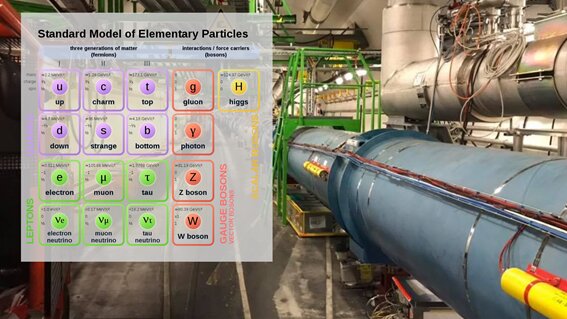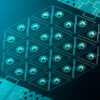The hunt is on for leptoquarks, particles beyond the limits of the standard model of particle physics —the best description we have so far of the physics that governs the forces of the Universe and its particles. These hypothetical particles could prove useful in explaining experimental and theoretical anomalies observed at particle accelerators such as the Large Hadron Collider (LHC) and could help to unify theories of physics beyond the standard model, if researchers could just spot them.
A new paper published in Nuclear Physics B by Anirban Karan, Priyotosh Bandyopadhyay, and Saunak Dutta, of the Indian Institute of Technology Hyderabad, Kandi, together with Mahesh Jakkapu, Graduate University for Advanced Studies (SOKENDAI), Kanagawa, Japan, examines the potential signatures of leptoquarks at the LHC to see how they could arise from proton-proton collisions for the possible mass ranges of these particles.
The main objective of this research is how to distinguish the signatures of different leptoquarks at proton-proton colliders like LHC or its proposed successor,” Karan says.
The researcher explains that leptoquarks could be important in describing why families of particles—fermions and bosons—interact in the way that they do. Fermions and bosons differ in the quality known as”spin”; while fermions are spin 1/2 particles, bosons are of integer spin.
“There are two types of fundamental fermions, namely quarks and leptons,” he explains. “This distinction is made on the basis of how they act in the strong interaction mediated by gluons [the strong force-carrying that stick together quarks in protons and neutrons and bind together short-lived particles created in particle accelerators].”
Karan further explains that two different types of elementary bosons have been discovered, gauge bosons and Higgs bosons, and each of these interacts with two quarks or two leptons.
Leptoquarks are a proposed form of boson which can couple to one quark and one lepton, instead. “There are various phenomenological issues in Particle Physics which could be resolved if these hypothetical particles do exist,” Karan adds. “However, no experimental evidence for their existence has been discovered yet.”
Karan adds that ten different types of leptoquarks interacting with observed standard model fermions have been proposed but there is little research concerning how their signatures might be distinguished. This paper explores that possibility.
“We find using simulations that total cross-section and angular distribution for pair production of leptoquarks at LHC can be used to determine the spin of leptoquarks,” Karan says. He adds that the notion of leptoquarks isn’t new, these particles were first proposed in the 1970s and the search for them heated up during the 1990s when the HERA particle accelerator began operating.
“No conclusive evidence for the existence of leptoquarks was found. Nevertheless, leptoquarks have had much attention in recent years,” Karan adds. “It has been noticed that leptoquarks are a very good candidate for explaining discrepancies between experimental measurements and standard model predictions. Therefore, they have been searched for at more energetic machines, including the LHC. Upcoming colliders are more energetic still and physicists hope to confirm their existence at those machines.”
More information:
Priyotosh Bandyopadhyay et al, Distinguishing Leptoquarks at the LHC/FCC, Nuclear Physics B (2021). DOI: 10.1016/j.nuclphysb.2021.115524
Provided by
SciencePOD
Citation:
Leptoquarks and the physics beyond the Standard Model (2021, December 10)



